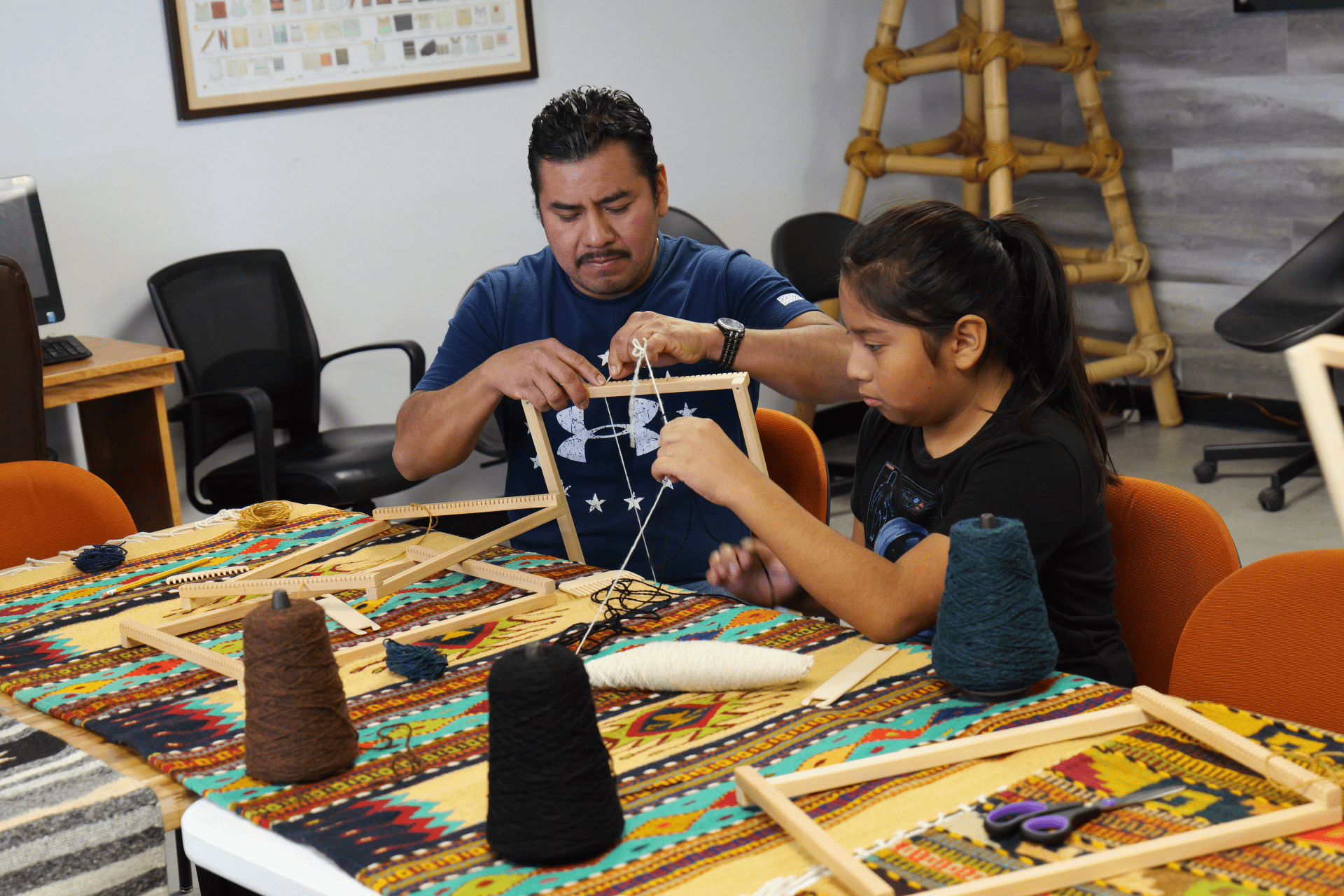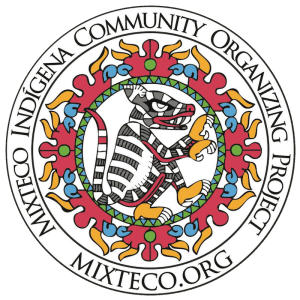Weaving the Future of Our Cultures

(Listen to the audio in Spanish and Mixteco, 4 min)
By: Miguel Hernandez
Local Non-Profit Mixteco Indigenous Community Organizing Project (MICOP) graduates its first class of students in Zapotec ancestral weaving. The art of ancestral weaving is one of the most important forms of art for the Zapotec community. This textile art has been passed from generation to generation for more than two thousand years. Originally, the Zapotecs honored their gods and preserved their stories through tapestries and textiles. Although the art of Zapotec weaving has exploded in popularity, there are still social and cultural barriers that prevent its preservation. With this in mind, MICOP embarked on the journey to teach the community to learn this art and, therefore, preserve it.
The artist in charge of these weaving workshops is Eduardo Jiménez. Jiménez is from Teotitlán del Valle, a town of 5,000 inhabitants, twenty miles from the city of Oaxaca, famous for its ancestral weavings. Jiménez’s style of weaving is extremely popular in Teotitlán del Valle and is one that uses the pedal loom, which was incorporated by the Spanish kingdom during the conquest of the Americas to speed up its process.
In an interview with Jiménez, he mentions how he learned to weave when he was just five years old because it is the tradition in his community to learn to weave from an early age since the economy of Teotitlán del Valle consists mostly of tapestries.
“The designs in Zapotec weaving come from indigenous communities and the writing that was left behind. Stories that were passed down from generation to generation can still be reflected on a rug. The art of weaving survives as the history of the human race did, being passed down from generation to generation.”
For Jiménez, the importance of these weaving workshops is behind teaching the community about their roots and strengthening their identities.
“Because a tree with strong roots can withstand any storm.”
Ultimately, nine members of the community received a weaving certificate that represents their ability to weave with the ancestral techniques of the Zapotec community. The graduates also took home their own rug that they wove themselves, representing their learning moment. These events are extremely important because they inspire community members to strengthen their roots and find their artistic identity within themselves. Finally, Jiménez commented, “I hope that this practice is preserved and that the community is inspired to learn it and preserve it.”
